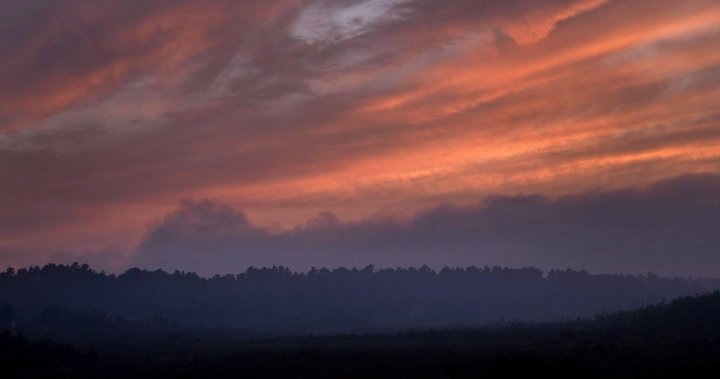A wave of ominous smoke billows across Ontario’s northern horizon as provincial authorities have issued urgent evacuation alerts for multiple communities, marking an alarming escalation in the 2024 wildfire season that has ignited weeks earlier than anticipated.
The Ontario Ministry of Natural Resources and Forestry confirmed Thursday that over 45 active wildfires are currently burning across the province, with 23 classified as “not under control” — a dramatic increase from this time last year. The most severe blazes are concentrated in northwestern regions, where tinder-dry conditions following an unusually warm spring have created perfect conditions for rapid fire spread.
“What we’re seeing is unprecedented for early May,” said Jennifer Davidson, Ontario’s Fire Management Specialist. “The combination of below-average precipitation, higher-than-normal temperatures, and strong winds has created extremely hazardous conditions that would typically emerge in late June.”
Communities including Red Lake, Ear Falls, and portions of Thunder Bay’s outlying areas have received evacuation alerts, with residents advised to prepare essential documents, medications, and emergency supplies. Several First Nations communities, including Pikangikum First Nation, have already begun voluntary evacuations of vulnerable residents.
Provincial fire services have mobilized additional resources, with over 310 firefighters deployed across the most critical zones. The Ministry has also requested assistance from neighboring provinces and federal resources as forecasts predict continued dry conditions.
“We’ve activated our emergency coordination protocols with Manitoba and Quebec,” confirmed Ontario Premier Doug Ford during a press conference in Toronto. “These fires don’t recognize provincial boundaries, and we’re taking a collaborative approach to ensure we protect communities at risk.”
The CO24 World News weather analysis team reports that climate scientists have been warning about increasingly severe and earlier fire seasons across Canada. Last year’s devastating fire season burned a record 18.5 million hectares nationally, and early indicators suggest 2024 could follow a similar pattern.
Environmental factors are only part of the equation. Authorities have determined that approximately 40% of the current fires were human-caused, prompting fire bans across provincial parks and crown lands. Violators face fines up to $25,000 and potential criminal charges if negligence leads to property damage.
The economic impact is already being felt across multiple sectors. Tourism operators in northwestern Ontario report widespread cancellations, while timber companies have suspended operations in high-risk zones. The Insurance Bureau of Canada estimates that wildfire-related claims have increased by 350% over the past decade in Ontario alone.
Health officials across the province are monitoring air quality impacts, with smoke advisories issued for communities even hundreds of kilometers from active fires. Dr. Amelia Patel, respiratory specialist at Toronto General Hospital, warns that “wildfire smoke contains particulate matter that can penetrate deep into lung tissue, creating serious health risks for vulnerable populations, especially those with pre-existing conditions.”
Emergency management officials emphasize that preparedness is critical. “Don’t wait until the evacuation order comes,” advised Regional Emergency Coordinator Michael Thompson. “By then, you may have only minutes to leave. Prepare now, know your evacuation routes, and stay informed through official channels.”
As communities across Ontario brace for what could be a historically challenging fire season, the question emerges: is this the new normal for Canada’s spring and summer months, and how must our infrastructure, emergency services, and communities adapt to this evolving threat?
For continuous updates on the Ontario wildfire situation, evacuation orders, and emergency resources, visit our dedicated CO24 Canada News section.

























